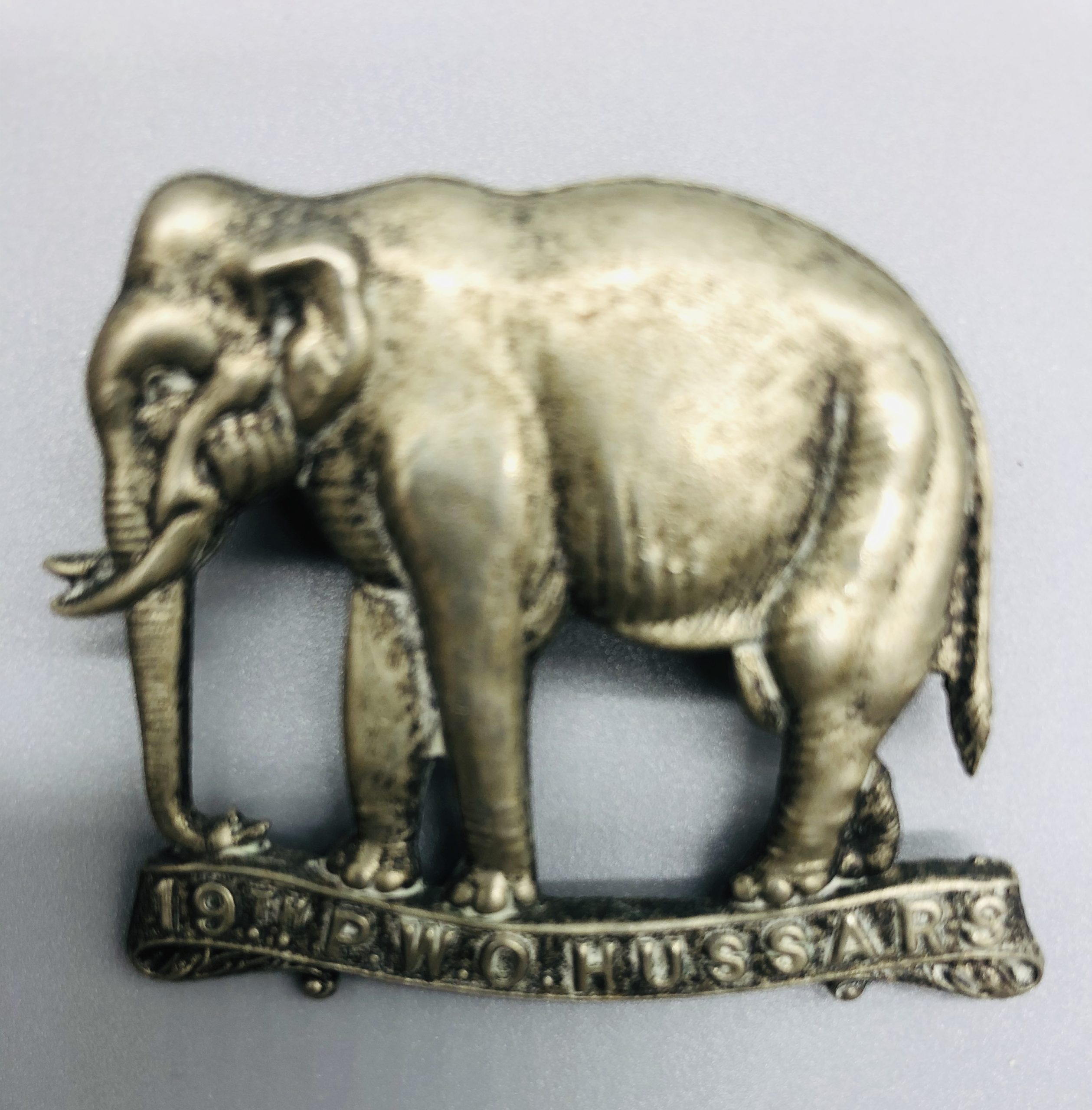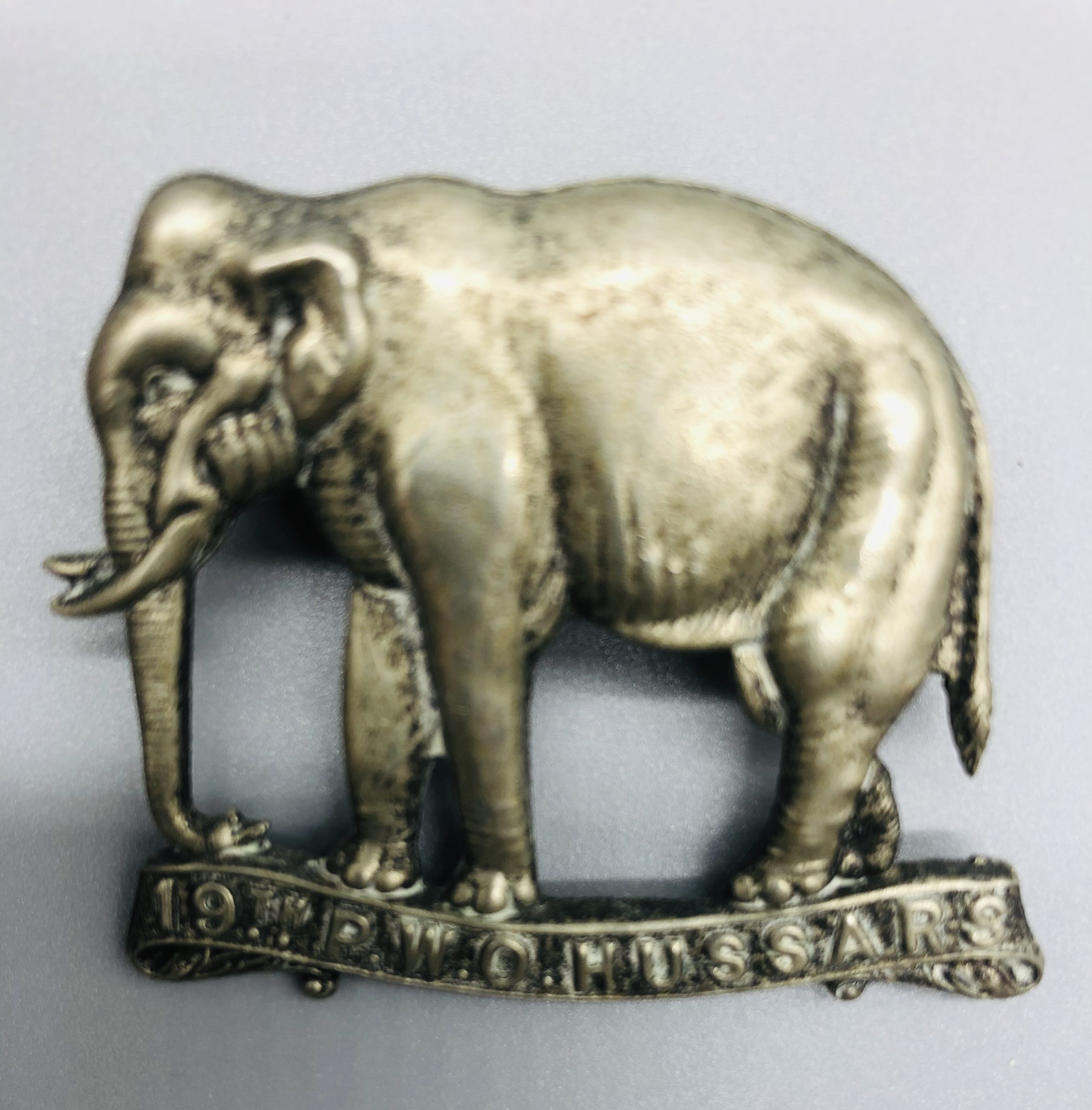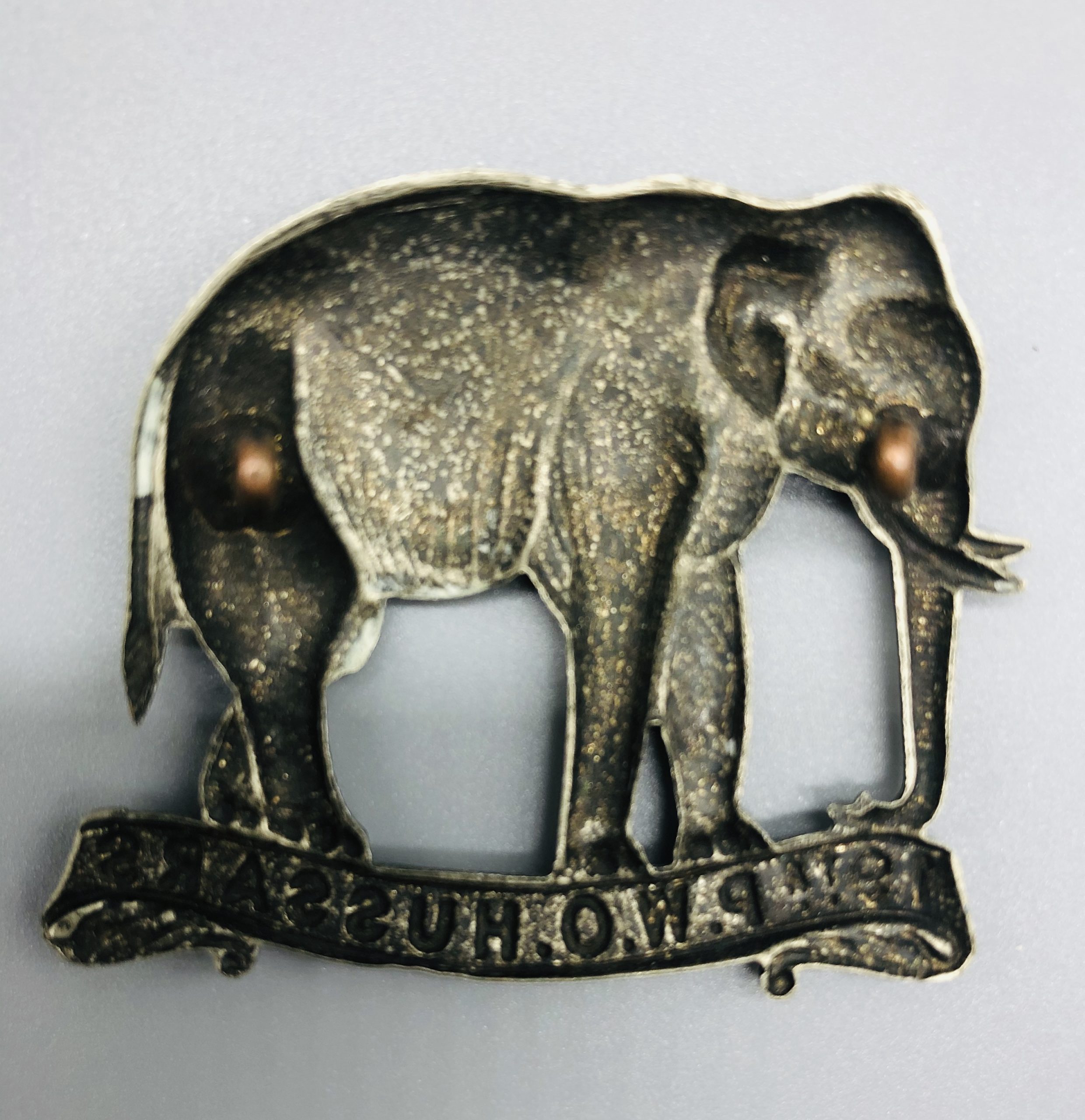Description
19th PWO Hussars Cap Badge
The regimental cap badge of the 19th PWO Hussars is manufactured in white metal, depicts a indian elephant facing to the left with a ornate scroll below inscribed ’19th P.W.O. Hussars’.
Brief History
The 19th P.W.O. Hussars was a British Army Cavalry Regiment was in 1786, when the 23rd Light Dragoons was renumbered. This unit had originally been raised in 1781 and was the first ever British cavalry regiment to operate in India.
The regiment fought against Tipu Sultan in the Third and Fourth Mysore Wars (1790-92 and 1799), including service at Seringapatam (1799). It later fought Dhoondia Wao in 1800 and served under Arthur Wellesley at Assaye (1803) during the Second Maratha War (1803-05). In 1806, it took part in the suppression of the Vellore mutiny.
The regiment’s last years in India were spent on garrison duties. It then sailed to Canada to fight in the War of 1812 (1812-15). It became the 19th Lancers in 1816, before finally disbanding in 1821.
The second regiment to bear the numeral was the 19th Hussars. This title was given to the 1st Bengal European Light Cavalry when it moved from the East India Company’s service to the British Army in 1862. The unit had originally been formed in 1858 for service during the Indian Mutiny (1857-59). In 1871, the 19th Hussars first arrived in England. Three years later, it was deemed the successor unit of the 19th Lancers and allowed to keep their battle honours.
In 1882, the regiment deployed to Egypt, fighting at Tel el-Kebir in September of that year. It went on to serve in the Sudan during the Mahdist War and fought at Abu Klea (1885).
Following various imperial garrison duties, it later fought in the Boer War (1899-1902). There, it took part in the defence of Ladysmith and the campaign in Eastern Transvaal.
In 1902, the regiment was re-titled the 19th (Alexandra, Princess of Wales’s Own) Hussars. And, when Alexandra became Queen Consort in 1908, the name changed to the 19th (Queen Alexandra’s Own Royal) Hussars.




